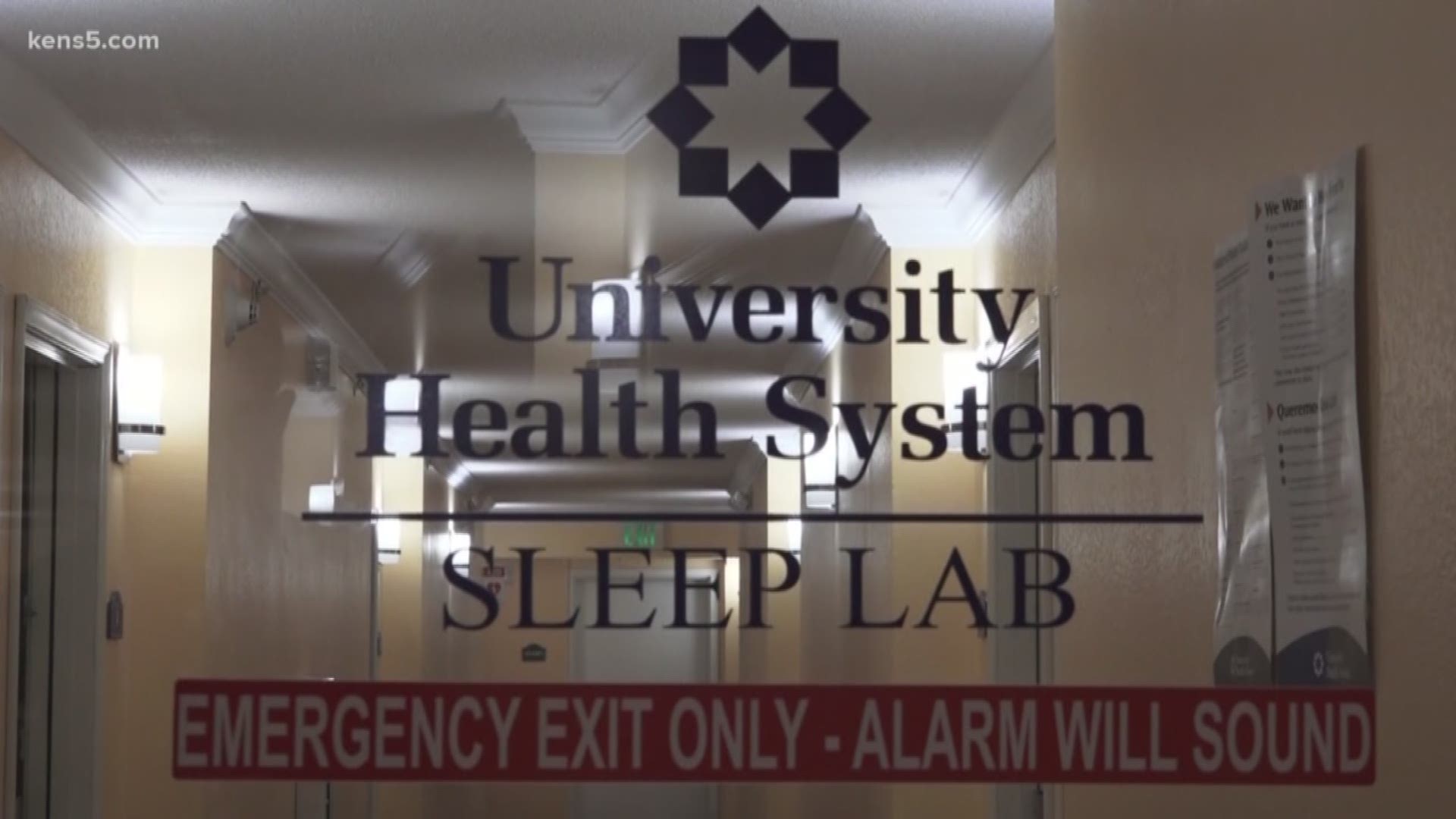SAN ANTONIO — For those who think they may have the sometimes-deadly sleep apnea, a sleep study can help them reach a diagnosis.
The University Health System has two sleep labs. We took a look at the sleep lab at the La Quinta Medical Center. "Those who have more advanced medical conditions can be tested in the sleep lab," said Dr. Suhaib Haq, the Medical Director for the Hilliard Center. He is board certified in sleep medicine. He said these sleep studies are life-savers. "Those patients who we see have sleep apnea, and their oxygen levels are going down, depending on what kind of study they are scheduled for, we can start them on treatment right away by using this CPAP or BiPAP machine."
Several leads are hooked up to this gadget and attached to the patient. "The leads are connected to the head to catch brain waves to find out what stage of sleep the patient is in," Dr. Haq said. "There are other connections to help us measure a patient's breathing, a patient's oxygen level, EKG and the limb movements."
All of that data is then fed into a computer for doctors to analyze and diagnose the patient. The doctor then looks at a graph of a recording of a sleep study patient. The graph shows brain activity, tracks eye movements, has an EKG, a microphone to detect snoring and belts on the chest to check how the patient is breathing.
Doctors even track arm and leg movements and can tell which position the patient is sleeping in. Dr. Haq added, "This tells us the patient is awake and is laying on their back and is breathing okay."
Dr. Haq also uses a hypnogram, which shows when a patient enters the first, second, and third stage of sleep, as well as the REM stage, or rapid eye movement stage.
It's all done in a comfortable hotel room to make sleep as natural as possible. "We take pride in taking care of the patient in the best set up in the best way," Dr. Haq said.
For more information about family health call 210-358-3045. You can also find the rest of Wear The Gown stories, just go to WearTheGown.com.

